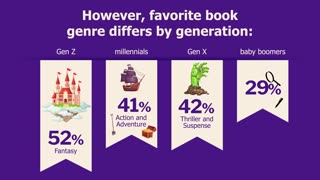Premium Only Content

Average American needs 60 ‘lazy days’ a year
Americans need 60 lazy days per year to feel rested and relaxed, according to a recent survey.
The poll of 2,000 Americans investigated how the average person leverages days literally doing nothing for self-care as well as the anatomy of a perfect do-nothing day.
It turns out Americans take lazy days very seriously, with one in five (21%) planning their lazy days in advance and 67% opting to take their lazy days spontaneously.
Although a forward-thinking few (11%) even put their do-nothing days on the calendar a few weeks ahead of time.
Conducted by Talker Research on behalf of Berkshire Blanket & Home Co. for National Lazy Day on Aug. 10, the poll found that almost three-quarters (72%) are likely to fly under the radar and won’t tell others they’re taking a day to relax at home.
Looking closer at lazy day trends, Americans are most likely to take lazy days on Sundays (39%) and Saturdays (27%).
And the most unpopular lazy day turns out to be Tuesday, according to findings, with only 5% labeling Tuesday as their go-to lazy day.
When it comes to lazy day activities, or lack of, respondents shared how much time they spend attached to their phones, lounging around and soaking in the self-care.
On a typical lazy day, the average person spends two hours lying in bed, an hour eating, three hours binge-watching movies and TV, an hour reading and two hours scrolling.
Three hours are spent doing literally absolutely nothing, two hours are spent napping and a full hour is generally devoted to dreading the next day.
“In honor of National Lazy Day, we wanted to see how Americans rest and rejuvenate during a much needed-lazy day,” said Mei Higgins, vice president of merchandising of Berkshire Blanket & Home Co. “Everyone deserves a rest day here and there, maybe even a bit more often, and days like these are so important when it comes to wellness. The study even found that almost three in four people (74%) said lazy days are crucial when it comes to self-care.”
The study revealed the top feelings that prompt Americans to take lazy days are low mood and energy (55%), burnout (39%) and feeling overwhelmed by responsibilities (34%).
A third even admitted they’ll take a lazy day if they want to avoid people and one in ten (9%) said an existential crisis is enough to warrant a lazy day.
Uncovering where people like to hang out on a lazy day, most (58%) will kick back on the couch. Although some (4%) said they spend most of their time lying on the floor.
Most people (75%) are more likely to spend the day lounging around if the weather is cool and gloomy and top essentials for do-nothing days, according to respondents, are a comfy outfit (47%) and a cozy blanket or throw (40%), along with a clean home (40%), a shower (40%) and ample junk food (39%).
Respondents aligned to classify the ideal lazy day comfy outfit and said it’s breathable (51%) and lightweight (50%). And the perfect cozy blanket is fluffy (66%) and big enough for two (31%).
“If you weren’t planning to already, we encourage everyone to spend some time simply resting and relaxing on Aug. 10,” said Higgins. “Giving yourself time to do nothing will go a long way towards health and happiness. And cultivating the perfect cozy space to relax in is key. Gathering cozy essentials and designing a relaxing space is part of self-care.”
AMERICA’S IDEAL LAZY DAY CONSISTS OF:
- 3 hours watching movies and TV
- 3 hours doing absolutely nothing
- 3 hours simply sitting and enjoying one’s living space
- 2 hours in bed
- 2 hours scrolling on one’s phone
- 2 hours napping
- 1 hour eating
- 1 hour reading
- 1 hour listening to an audiobook or podcast
- 1 hour dreading the next day
Survey methodology:
Talker Research surveyed 2,000 general population Americans; the survey was commissioned by Berkshire Blanket & Home Co. and administered and conducted online by Talker Research between July 15 and July 19.
We are sourcing from a non-probability frame and the two main sources we use are:
● Traditional online access panels — where respondents opt-in to take part in online market research for an incentive
● Programmatic — where respondents are online and are given the option to take part in a survey to receive a virtual incentive usually related to the online activity they are engaging in
Those who did not fit the specified sample were terminated from the survey. As the survey is fielded, dynamic online sampling is used, adjusting targeting to achieve the quotas specified as part of the sampling plan.
Regardless of which sources a respondent came from, they were directed to an Online Survey, where the survey was conducted in English; a link to the questionnaire can be shared upon request. Respondents were awarded points for completing the survey. These points have a small cash-equivalent monetary value.
Cells are only reported on for analysis if they have a minimum of 80 respondents, and statistical significance is calculated at the 95% level. Data is not weighted, but quotas and other parameters are put in place to reach the desired sample.
Interviews are excluded from the final analysis if they failed quality-checking measures. This includes:
● Speeders: Respondents who complete the survey in a time that is quicker than one-third of the median length of interview are disqualified as speeders
● Open ends: All verbatim responses (full open-ended questions as well as other please specify options) are checked for inappropriate or irrelevant text
● Bots: Captcha is enabled on surveys, which allows the research team to identify and disqualify bots
● Duplicates: Survey software has “deduping” based on digital fingerprinting, which ensures nobody is allowed to take the survey more than once
It is worth noting that this survey was only available to individuals with internet access, and the results may not be generalizable to those without internet access.
-
 1:08
1:08
SWNS
6 days agoSurvey reveals the most eccentric books to give as a gift
29 -
 LIVE
LIVE
LFA TV
15 hours agoIDENTIFYING PROBLEMS EARLY! | LIVE FROM AMERICA 11.19.24 11am EST
5,574 watching -
 UPCOMING
UPCOMING
The Shannon Joy Show
18 hours ago🔥🔥Live Exclusive With Peter Schiff! Bitcoin MANIA - NEW Gold Or FOOLS Gold? Technocrats Speculative Frenzy Is Creating The Bitcoin Bubble - Will Taxpayers Get Screwed When It Pops?🔥🔥
1.02K -
 53:32
53:32
Officially Unfollowed
1 hour ago $0.44 earnedMaking America Healthy Again | Ep. 16
4.86K1 -
 22:38
22:38
CapEx
11 hours agoThis Sector is Unjustly DOWN 90% & Everyoneʼs Asleep at the Wheel
9.85K -
 37:02
37:02
BonginoReport
5 hours agoTrump's Greatest Cabinet Pick (Ep.88) - 11/19/24
118K148 -
 LIVE
LIVE
Vigilant News Network
15 hours agoBombshell COVID Vaccine Study PROVES Deaths | The Daily Dose
1,420 watching -
 1:02:44
1:02:44
2 MIKES LIVE
3 hours agoThe Mike Schwartz Show 11-19-2024
27.3K -
 1:17:12
1:17:12
Game On!
11 hours ago $6.37 earnedThe Dallas Cowboys are NOT a serious NFL franchise!
53.3K2 -
 1:21:04
1:21:04
PMG
11 hours ago $16.17 earned"Trump's Plan to "SHATTER THE DEEP STATE" Revealed!"
50.6K25